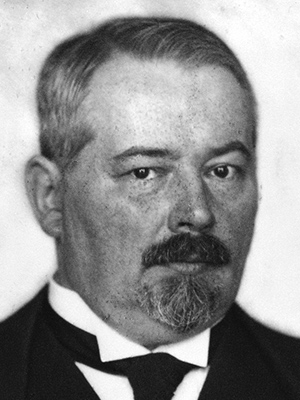Otto Gussmann on:
[Wikipedia]
[Google]
[Amazon]
 Otto Friedrich Gussmann (22 May 1869, Wachbach,
Otto Friedrich Gussmann (22 May 1869, Wachbach,
 His father was a
His father was a ''Ordentliche Mitglieder des Deutschen Künstlerbundes seit der Gründung 1903 / Gussmann, Otto''
/ref> as well as being a co-founder of the and
Biography and references
@ the Stadtwiki Dresden * Thomas Morgenroth, "Himmelfahrt im Jugendstil", In: ''
Online
{{DEFAULTSORT:Gussmann, Otto 1869 births 1926 deaths German artists Decorative arts German designers German art educators People from Main-Tauber-Kreis
 Otto Friedrich Gussmann (22 May 1869, Wachbach,
Otto Friedrich Gussmann (22 May 1869, Wachbach, Main-Tauber-Kreis
Main-Tauber-Kreis is a ''Landkreis'' (district) in the northeast of Baden-Württemberg, Germany. Neighboring districts are (from northwest clockwise) Miltenberg, Main-Spessart, Würzburg, Neustadt (Aisch)-Bad Windsheim and Ansbach (all in Bavaria ...
- 27 July 1926, Dresden
Dresden (, ; Upper Saxon: ''Dräsdn''; wen, label= Upper Sorbian, Drježdźany) is the capital city of the German state of Saxony and its second most populous city, after Leipzig. It is the 12th most populous city of Germany, the fourth ...
) was a German decorative artist, designer, and art professor.
Biography
 His father was a
His father was a pastor
A pastor (abbreviated as "Pr" or "Ptr" , or "Ps" ) is the leader of a Christian congregation who also gives advice and counsel to people from the community or congregation. In Lutheranism, Catholicism, Eastern Orthodoxy, Oriental Orthodoxy and ...
. After completing secondary school, he began an apprenticeship with a decorative painter in Stuttgart. He also took classes at the Kunstgewerbeschule
A Kunstgewerbeschule (English: ''School of Arts and Crafts'' or S''chool of Applied Arts'') was a type of vocational arts school that existed in German-speaking countries from the mid-19th century. The term Werkkunstschule was also used for thes ...
(now the State Academy of Fine Arts). In 1892, he moved to the teaching institute at the Kunstgewerbemuseum Berlin
__NOTOC__
The Kunstgewerbemuseum, or Museum of Decorative Arts, is an internationally important museum of the decorative arts in Berlin, Germany, part of the Staatliche Museen zu Berlin (Berlin State Museums). The collection is split between t ...
. Four years later, he began studying at the Berlin Academy of Fine Arts.
After completing his studies, he established his reputation with paintings and decorations for the new Reichstag, designed by Paul Wallot
Johann Paul Wallot (26 June 1841 Oppenheim am Rhein – 10 August 1912 Bad Schwalbach) was a German architect of Huguenot descent, best known for designing the Reichstag building in Berlin, erected between 1884 and 1894. He also built the adjacent ...
. In 1897, Wallot invited him to Dresden to become a teacher at the Academy of Fine Arts
The following is a list of notable art schools.
Accredited non-profit art and design colleges
* Adelaide Central School of Art
* Alberta College of Art and Design
* Art Academy of Cincinnati
* Art Center College of Design
* The Art Institute ...
. The master school for decorative painting was opened under his direction in 1910. He would be named a Professor in 1915 and, four years later, he became Director of Studies; holding that position until his death.
Around 1900, he joined the ; the progenitor of the Dresden Secession
The Dresdner Sezession (Dresden Secession) was an art group aligned with German Expressionism founded by Otto Schubert, Conrad Felixmüller and his pupil Otto Dix in Dresden, during a period of political and social turmoil in the aftermath of Wor ...
. He was married in 1904, to Gertrud Herzog (1877-1961), and they had three children. The following year, he joined a reform-oriented group known as (The Guild). In 1906, he designed the posters for the , in which Die Zunft played a major role.
He was also a member of the Deutscher Künstlerbund,/ref> as well as being a co-founder of the and
Die Brücke
The Brücke (Bridge), also Künstlergruppe Brücke or KG Brücke was a group of German expressionist artists formed in Dresden in 1905. Founding members were Fritz Bleyl, Erich Heckel, Ernst Ludwig Kirchner and Karl Schmidt-Rottluff. Later memb ...
, a group of Expressionist
Expressionism is a modernist movement, initially in poetry and painting, originating in Northern Europe around the beginning of the 20th century. Its typical trait is to present the world solely from a subjective perspective, distorting it rad ...
artists. He taught several of their members, including Max Pechstein
Hermann Max Pechstein (31 December 1881 – 29 June 1955) was a German expressionist painter and printmaker and a member of the Die Brücke group. He fought on the Western Front during World War I and his art was classified as Degenerate Ar ...
and Otto Dix
Wilhelm Heinrich Otto Dix (; 2 December 1891 – 25 July 1969) was a German painter and printmaker, noted for his ruthless and harshly realistic depictions of German society during the Weimar Republic and the brutality of war. Along with George ...
.
During his years as a teacher, he also provided decorative art for the Lukaskirche (1903), the Sächsisches Ständehaus (1907), the Church of Reconciliation (1909), and the (1911), among others.
While preparing for an exhibition in 1926, he died of a heart attack. A street in the district of Dresden has been named after him.

References
Further reading
* Kurt Proksch: "Gussmann". ''Maler und Werk'' series, Verlag der Kunst, Dresden 1989 * Adolf Smitmans, Anne Peters (Eds.): ''Otto Gussmann: 1869–1926'', , 1992, * Timo Niegsch (Ed.): ''Gussmann – Lange – Dix: Albstadts Dresdner Kunst'', Albstadt Art Museum, 2006,External links
*Biography and references
@ the Stadtwiki Dresden * Thomas Morgenroth, "Himmelfahrt im Jugendstil", In: ''
Sächsische Zeitung
''Sächsische Zeitung'' (; "Saxon Newspaper") is a regional German daily newspaper. The paper is published in Dresden. Its circulation is around 227.940, a fall of around 40% since 1998. Around 93% of copies sold are delivered to subscribers. De ...
'', 2017,Online
{{DEFAULTSORT:Gussmann, Otto 1869 births 1926 deaths German artists Decorative arts German designers German art educators People from Main-Tauber-Kreis